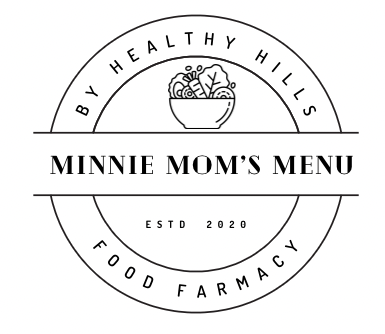When humans lived in caves, they didn’t know anything about preserving and storing food. They spent all their waking time and energy hunting and gathering food. When they had it, they gobbled it down fast. Instead of storing food in pantries or cupboards, they stored energy in their bodies in the form of fat to burn during periods when there was little or nothing to eat. Each year, it was absolutely vital for them to put on a good layer of fat during the warm spring and summer months. That was the only way they could guarantee their survival during the lean and mean winter months. And since women bore the young, they needed more energy to sustain themselves and their babies, and that meant they were usually heavier. Even though we no longer live in caves, we have inherited and maintained this basic mechanism for fat storage from our hunting and gathering ancestors.
Each one of us is born with a certain number of fat cells. How many of these fat cells you possess depends on genetics. If you have a lot of fat cells, maybe your ancestors were the biggest people in the tribe, which was a good thing because they had the best chances of survival. You can never get rid of fat cells, but – unfortunately – you can add to them. Depending upon what you eat, your body will manufacture new fat cells. And like those you were born with, they never go away.
That doesn’t mean you’re doomed to be fat once you put on extra pounds. It is possible to shrink fat cells. That’s what happens when you lose weight. You burn up the fat stored in those big fat cells. Think of them as balloons. Burning off the fat inside them has the same effect as letting the air out of a balloon.
To guarantee a lifetime of weight-control success, you have to change the type of foods you eat, so that you ingest less fat and still get the vitamins, minerals, trace elements, protein, fat and carbohydrates your body needs to thrive. Extremely low-calorie diets may help you shed pounds quickly, but they’ll lead to failure in the long run. That’s because humans are genetically protected against starvation.
During food shortages, our bodies slow down our metabolisms and burn less energy so we can stay alive. A part of our brain called the hypothalamus keeps us at a relatively steady weight creating a “set point” which is the weight where our body feels comfortable. The hypothalamus determines this point based on the level of consumption it’s used to. It seeks to keep our weight constant, even if that point is over what it should be. When we drastically cut back our food intake, the brain thinks the body is starving, and in an effort to preserve life, it slows the metabolism. Soon the pounds stop coming off. Consequently, we grow hungry and uncomfortable and then eat more and then the diet fails.
How can you compensate for this metabolic slow-down? The answer is that you have to change the nutritional composition of the foods you eat. You will have to cut down on total calories – that’s absolutely basic to weight loss. More important, however, is reducing the percentage of total calories you are getting from fat. That’s how you’ll avoid starvation panic in your system. At the same time, you reduce the amount of fat in your food, replacing it with safe, low calorie, nutrient-rich plant foods. This will convince your brain that your body is getting all the nutrition it needs. In fact, you’ll be able to eat more food and feel more satisfied while consuming fewer calories and fats. Plant foods break down slowly in your stomach, making you feel full longer, and they are rich in vitamins, minerals, trace elements, carbohydrates and protein for energy and muscle-building. This allows your body to burn off its excess stored fat.
Each one of the following foods is clinically proven to promote weight loss. These foods go a step beyond simply adding no fat to your system – they possess special properties that add zip to your system and help your body melt away unhealthy pounds. These incredible foods can suppress your appetite for junk food and keep your body running smoothly with clean fuel and efficient energy. You can include these foods in any sensible weight-loss plan. They give your body the extra metabolic kick that it needs to shave off weight quickly.
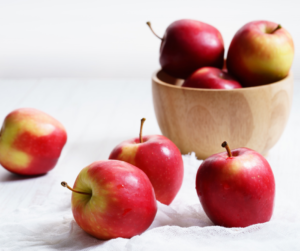
Apples
These marvels of nature deserve their reputation for keeping the doctor away when you eat one a day. And now, it seems, they can help you melt the fat away, too. First of all, they elevate your blood glucose (sugar) levels in a safe, gentle manner and keep them up longer than most foods. The practical effect of this is to leave you feeling satisfied longer, say researchers. Secondly, they’re one of the richest sources of soluble fiber in the supermarket. This type of fiber prevents hunger pangs by guarding against dangerous swings or drops in your blood sugar level, says Dr. James Anderson of the University of Kentucky’s School of Medicine. An average size apple provides only 81 calories and has no sodium, saturated fat or cholesterol. You’ll also get the added health benefits of lowering the level of cholesterol already in your blood as well as lowering your blood pressure.

Whole Grain Bread
You needn’t dread bread. It’s the butter, margarine or cream cheese you put on it that’s fattening, not the bread itself. We’ll say this as often as needed – fat is fattening. If you don’t believe that, ponder this – a gram of carbohydrate has four calories, a gram of protein four, and a gram of fat nine. So which of these is really fattening? Bread, a natural source of fiber and complex carbohydrates, is okay for dieting. Norwegian scientist Dr. Bjarne Jacobsen found that people who eat less than two slices of bread daily weigh about 11 pounds more than those who eat a lot of bread.
Studies at Michigan State University show some breads actually reduce the appetite. Researchers compared white bread to dark, high-fiber bread and found that students who ate 12 slices a day of the dark, high-fiber bread felt less hunger on a daily basis and lost five pounds in two months. Others who ate white bread were hungrier, ate more fattening foods and lost no weight during this time.

Coffee
“Easy does it” is the password here. We’ve all heard about potential dangers of caffeine – including anxiety and insomnia – so moderation is the key. The caffeine in coffee can speed up the metabolism. In nutritional circles, it’s known as a metabolic enhancer, according to Dr. Judith Stern of the University of California at Davis.
This makes sense, since caffeine is a stimulant. Studies show it can help you burn more calories than normal, perhaps up to 10 percent more. For safety’s sake, it’s best to limit your intake to a single cup in the morning and one in the afternoon. Add only skim or plant based milk to it and try doing without sugar – many people learn to love it that way. If you must, use a sweetener such as monk fruit, stevia or agave.
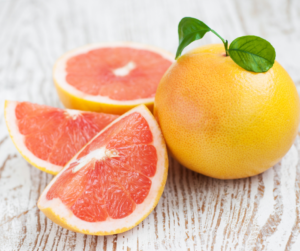
Grapefruit
There is good reason for this traditional diet food to be a regular part of your diet. It helps dissolve fat and cholesterol, according to Dr. James Cerd of the University of Florida. An average sized grapefruit has 74 calories, delivers a whopping 15 grams of pectin (the special fiber linked to lowering cholesterol and fat), is high in vitamin C and potassium and is free of fat and sodium. It’s rich in natural galacturonic acid, which adds to its potency as a fat and cholesterol fighter. The additional benefit here is assistance in the battle against atherosclerosis (hardening of the arteries) and the development of heart disease. Try sprinkling it with cinnamon rather than sugar to take away some of the tart taste.

Mustard
Try the hot, spicy kind you find in Asian import stores, specialty shops and exotic groceries. Dr. Jaya Henry of Oxford Polytechnic Institute in England, found that the amount of hot mustard normally called for in Mexican, Indian and Asian recipes, about one teaspoon, temporarily speeds up the metabolism, just as caffeine and the drug ephedrine do. “But mustard is natural and totally safe,” Henry says. “It can be used every day, and it really works. I was shocked to discover it can speed up the metabolism by as much as 20 to 25 percent for several hours.” This can result in the body burning up to an extra 175 calories for every 700 consumed, Dr. Henry says.
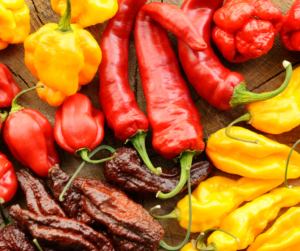
Peppers
Hot, spicy chili peppers fall into the same category as hot mustard, Henry says. He studied them under the same circumstances as the mustard and they worked just as well. A mere three grams of chili peppers were added to a meal consisting of 766 total calories. The peppers’ metabolism-raising properties worked like a
charm, leading to what Henry calls a diet-induced thermic effect. It doesn’t take much to create the effect. Most salsa recipes call for four to eight chilies – that’s not a lot.
Peppers are astonishingly rich in vitamins A and C, abundant in calcium, phosphorus, iron and magnesium, high in fiber, free of fat, low in sodium and have just 24 calories per cup.
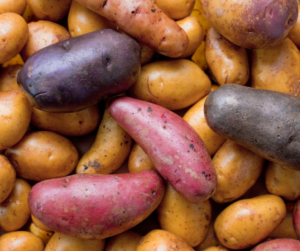
Potatoes
We’ve got to be kidding, right? Wrong. Potatoes have developed the same “fattening” rap as bread, and it’s unfair. Dr. John McDougal, director of the nutritional medicine clinic at St. Helena Hospital in Deer Park, California, says, “An excellent food with which to achieve rapid weight loss is the potato, at 0.6 calories per gram or about 85 calories per potato.” A great source of fiber and potassium, they lower cholesterol and protect against strokes and heart disease. Preparation and toppings are crucial. Steer clear of butter, milk and sour cream, or you’ll blow it. Opt for a little plant based butter and some nutritional yeast or even hummus.
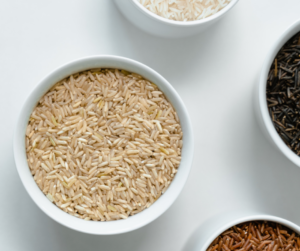
Rice
An entire weight-loss plan, simple called the Rice Diet, was developed by Dr. William Kempner at Duke University in Durham, North Carolina. The diet, dating to the 1930’s, makes rice the staple of your food intake. Later on, you gradually mix in various fruits and vegetables. It produces stunning weight loss and medical results. The diet has been shown to reverse and cure kidney ailments and high blood pressure. A cup of cooked rice (150 grams) contains about 178 calories – approximately one-third the number of calories found in an equivalent amount of beef or cheese. And remember, whole grain rice is much better for you than white rice.
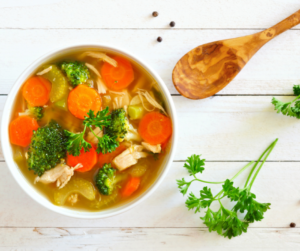
Soups
Soup is good for you! Maybe not the canned varieties from the store – but old-fashioned, homemade soup promotes weight loss. A study by Dr. John Foreyt of Baylor College of Medicine in Houston, Texas, found that dieters who ate a bowl of soup before lunch and dinner lost more weight than dieters who didn’t. In fact, the more soup they ate, the more weight they lost. And soup eaters tend to keep the weight off longer. Naturally, the type of soup you eat makes a difference. Cream soups or those made of beef or pork are not your best bets.
Here’s a great recipe:
Slice three large onions, three carrots, four stalks of celery, one zucchini and one yellow squash. Place in a kettle. Add three cans crushed tomatoes, two packets low-sodium bouillon, three cans water and one cup white wine (optional). Add tarragon, basil, oregano, thyme and garlic powder. Boil, then simmer for an hour. Serves six.
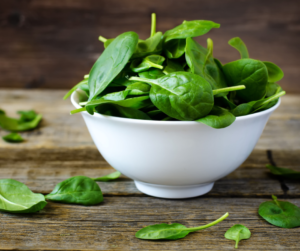
Spinach
Popeye really knew what he was talking about, according to Dr. Richard Shekelle, an epidemiologist at the University of Texas. Spinach has the ability to lower cholesterol, rev up the metabolism and burn away fat. Rich in iron, beta carotene and vitamins C and E, it supplies most of the nutrients you need.
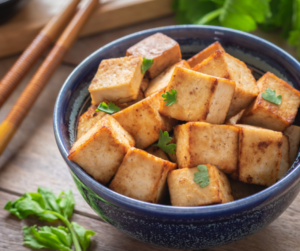
Tofu
You just can’t say enough about this health food from Asia. Also called soybean curd, it’s basically tasteless, so any spice or flavoring you add blends with it nicely. A 21⁄2 ” square has 86 calories and nine grams of protein. (Experts suggest an intake of about 40 grams per day.) Tofu contains calcium and iron, almost no sodium and not a bit of saturated fat. It makes your metabolism run on high and even lowers cholesterol. With different varieties available, the firmer tofus are good for stir-frying or adding to soups and sauces while the softer ones are good for mashing, chopping and adding to salads.
A sensible weight loss plan calls for no fewer that 1,200 calories per day. But Dr. Charles Klein recommends consuming more that that, if you can believe it – 1,500 to 1,800 calories per day. He says you will still lose weight quite effectively at that intake level without endangering your health. Hunger is satisfied more completely by filling the stomach. Ounce for ounce, the foods listed above accomplish that better than any others. At the same time, they’re rich in nutrients and possess special fat-melting attributes.
